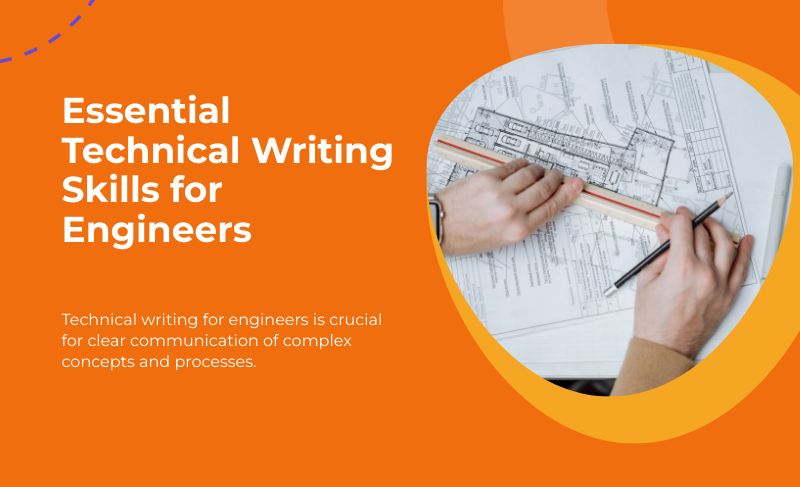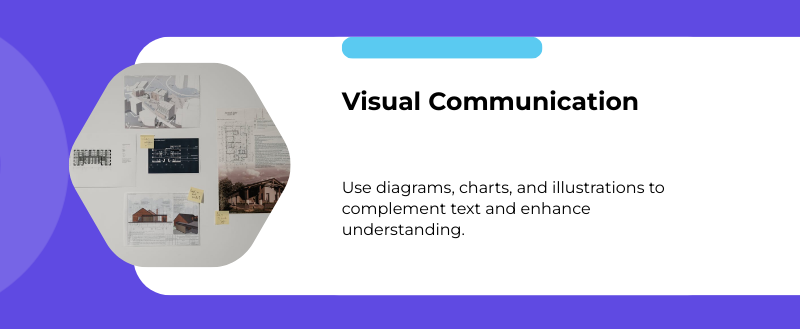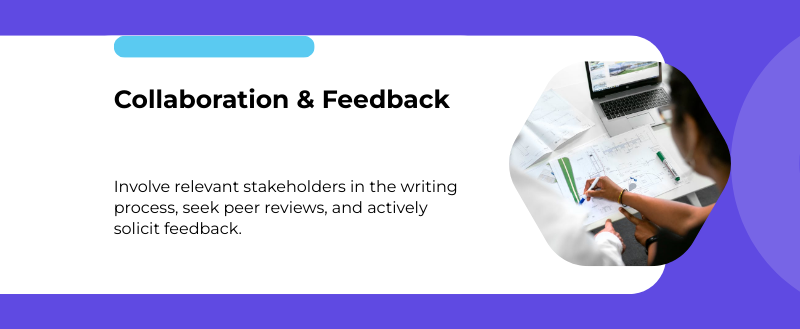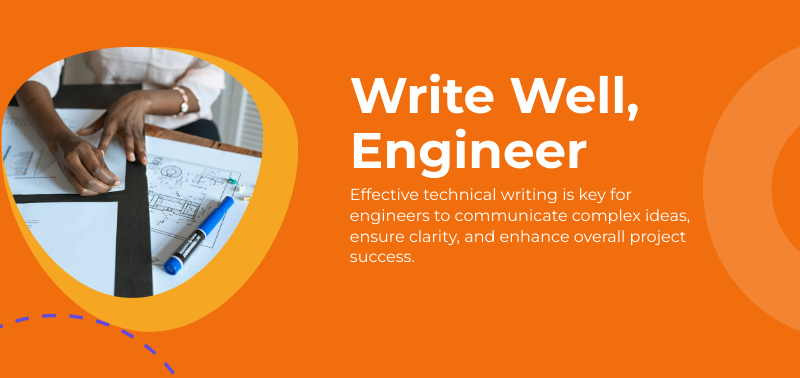Engineers must not only design and analyze systems—they must also articulate their processes, decisions, and results clearly. That’s where technical writing skills for engineers become indispensable.
Whether you’re drafting design specifications, documenting software, or preparing a research report, strong technical writing bridges the gap between complex ideas and reader comprehension.
Why Technical Writing Is Critical for Engineers
Technical writing is the lifeblood of engineering communication. It’s not just about grammar or clarity—it’s about precision, safety, and success.
Here’s why technical writing should be a top priority for engineers:
- Compliance: Accurate documentation ensures adherence to regulations and standards.
- Safety: Clear instructions and process documents reduce risk and prevent accidents.
- Efficiency: Well-written specifications save time and avoid costly errors.
- Knowledge transfer: Effective writing helps share insights across teams, departments, and generations.
- Innovation: Articulate engineers can communicate new ideas persuasively to stakeholders and decision-makers.
Clarity and Conciseness
Engineers often deal with highly technical concepts. Your job as a technical writer is to simplify without dumbing down.
Best Practices:
- Use short, direct sentences.
- Avoid jargon unless necessary—and define it when used.
- Replace passive voice with active voice.
- Organize information logically (e.g., chronologically, by importance, or function).
Consider this example:
❌ “A determination was made that the system needed to be recalibrated.”
✅ “The team recalibrated the system.”
The second version is clearer, more concise, and easier to read.
Document Structure and Formatting
An engineer’s documentation is only as strong as its structure. Readers rely on predictable, well-organized layouts to find and understand key information.
Core Document Types:
- Technical reports
- Standard operating procedures (SOPs)
- White papers
- User manuals
- Maintenance logs
- Project proposals
Tips for Structuring Content:
- Use headings and subheadings (H2, H3, H4) to guide the reader.
- Include tables, bullet points, and numbered lists for readability.
- Maintain consistent font, spacing, and formatting.
- Consider a table of contents or index for lengthy documents.
These formatting techniques not only enhance usability but also support internal linking strategies that benefit documentation discoverability and SEO in web-based technical repositories.
Visual Communication and Diagrams
Technical content is often more digestible when accompanied by visuals. Diagrams, schematics, flowcharts, and CAD illustrations can make or break understanding.
Key Principles:
- Use visuals to complement, not replace, text.
- Label diagrams clearly and consistently.
- Place visuals near the relevant explanatory content.
- Include figure captions and reference them within the text.
Tools like AutoCAD, MATLAB, and Visio can help generate high-quality engineering visuals, while platforms like LaTeX or Markdown allow for smooth integration in technical documents.
Precision and Accuracy
In engineering, precision isn’t optional. A single ambiguity in a measurement, material specification, or process step can lead to failure.
Essential Practices:
- Double-check data, units, and calculations.
- Avoid vague terms like “some,” “around,” or “several.”
- Cite data sources when necessary.
- Ensure technical terms and symbols are used correctly and consistently.
Use standards from ISO, IEEE, or ASME to align with industry documentation requirements. Following a consistent style guide—such as the Microsoft Manual of Style or Chicago Manual of Style—also elevates your professionalism.
Mastering Audience Analysis
Great technical writing starts with knowing your audience. Whether you’re addressing a regulatory board, end-users, or fellow engineers, your message must align with their expectations and understanding level.
Key Skills:
- Identifying audience knowledge levels (novice, intermediate, expert)
- Tailoring tone and terminology accordingly
- Choosing appropriate detail and depth
A design specification for a product development team should differ vastly from an executive summary for upper management. Adjust vocabulary, format, and visual aids based on your readers’ background and what they need from the document.
Collaboration and Review Process
Engineers rarely write in isolation. Technical documents often require input from various departments: quality assurance, manufacturing, legal, marketing, and more.
Collaboration Tools:
- Version control (e.g., GitHub for software documentation)
- Commenting tools (Google Docs, MS Word)
- Project management platforms (Jira, Asana, Confluence)
Encourage peer reviews and cross-functional feedback loops. Always factor in time for iterations and approvals in your project timeline.
Version Control and Documentation Management
Managing document versions is crucial in engineering workflows, especially when working in teams or across product lifecycles.
Practices to Implement:
- Track changes with timestamps and authorship.
- Use clear naming conventions (e.g., spec_v1.2_final.docx).
- Archive old versions, but keep the current one easily accessible.
- Integrate document management systems (DMS) like SharePoint, Confluence, or Git-based platforms.
Failing to track document changes can lead to outdated designs being implemented—sometimes with catastrophic results.
Regulatory and Compliance Awareness
Engineers in regulated industries (e.g., aerospace, pharmaceuticals, automotive) must ensure their documentation adheres to specific guidelines.
Examples of standards include:
- FDA (for medical devices and pharma)
- AS9100 (aerospace quality management)
- ISO 9001 (quality assurance)
- IEC 61508 (functional safety)
Understanding how to write within these frameworks is a high-value technical writing skill, often required for compliance audits.
Adaptability to Mediums and Formats
Today’s engineering writing isn’t limited to PDFs and printed manuals. Engineers must adapt to:
- Online help systems
- Interactive guides
- Knowledge bases and wikis
- Technical blog posts and case studies
The ability to write for both print and digital mediums is crucial. Digital writing may require SEO optimization, hyperlinking, responsive formatting, and accessibility standards compliance (e.g., WCAG guidelines).
Continuous Improvement Through Feedback and Metrics
Lastly, effective engineering communicators embrace feedback. Document usability testing and analytics can reveal what’s working and what’s not.
Strategies:
- Conduct surveys among users/readers.
- Track metrics like bounce rates or support ticket volume (for documentation impact).
- Review common user errors that could be clarified via better instructions.
- Iterate and update documentation regularly based on feedback.
This iterative mindset mirrors the engineering design process itself and leads to continuous improvement.
Key Tools That Help Engineers Write Better
| Tool | Purpose |
| Grammarly | Grammar and clarity suggestions |
| LaTeX | Writing mathematical and scientific documents |
| Markdown | Lightweight syntax for documentation |
| Doxygen / Sphinx | Code documentation generators |
| Lucidchart / Draw.io | Diagrams and flowcharts |
| Adobe FrameMaker | Long technical documents |
| Confluence / Notion | Collaborative documentation platforms |
Integrating Technical Writing into Engineering Strategy
Technical writing doesn’t just support engineering—it is an essential part of strategy. Whether you’re designing systems, launching products, or managing risk, documentation plays a key role in each phase.
To build a culture of effective technical communication:
- Train engineering teams in writing best practices.
- Incentivize clear documentation as part of performance metrics.
- Include documentation milestones in engineering roadmaps.
- Leverage content management systems that enable cross-linking and collaboration.
When done well, technical documentation becomes a strategic asset—helping teams move faster, avoid duplication, satisfy customers, and meet compliance.
Embedding Documentation into Engineering Workflow
One of the biggest challenges engineering teams face is treating documentation as an afterthought rather than a core component of their workflow. This reactive approach often results in rushed, incomplete, or outdated documentation that fails to deliver long-term value.
To shift this mindset, teams must embed documentation into each phase of the engineering development lifecycle—from planning to deployment.
1. During Design
Early-stage design work benefits immensely from thorough documentation. Engineers should record their:
- Design assumptions
- Calculations and simulations
- Material choices
- Risk analyses
Doing this upfront ensures transparency, eases cross-functional reviews, and provides a foundation for future decisions. It also makes design reviews more effective when stakeholders can follow the thought process behind technical decisions.
2. During Development
As systems are built and iterated, continuous documentation helps avoid knowledge silos. Key elements to capture include:
- Code comments and architecture diagrams
- Interface control documents (ICDs)
- Configuration settings and test environments
- Change logs
Using tools like Git, Jira, or Confluence, engineers can document changes as they go, avoiding the end-of-cycle documentation crunch.
3. During Testing and Validation
Documentation is critical in the verification and validation (V&V) phase. Engineers should produce:
- Test plans
- Test cases and protocols
- Test results
- Bug reports and fixes
Not only does this support internal quality assurance, but it’s often required for compliance in regulated industries.
4. During Deployment and Handoff
Final delivery isn’t complete without accompanying documentation. This can include:
- User manuals
- Maintenance instructions
- Training materials
- Service bulletins
Well-documented handoffs reduce support load and increase customer satisfaction. For internal projects, strong documentation helps future teams maintain or upgrade the system without starting from scratch.
5. Post-Launch and Maintenance
Post-launch updates, patches, and improvements must also be documented. Engineers should track:
- Version history
- Known issues
- Workarounds
- Patch notes
Documenting these changes keeps stakeholders informed and builds a living history of the system.
Building a Culture of Writing in Engineering Teams
Developing documentation habits isn’t just about assigning writing tasks—it’s about creating a culture of knowledge sharing. This requires leadership, tools, and clear expectations.
Set Documentation Standards
Establish and enforce clear standards for:
- Document formats
- Naming conventions
- Versioning rules
- Required documentation for each project phase
You can develop an internal documentation style guide or adopt established standards like IEEE or ISO to ensure consistency.
Make Writing Part of the Job
Too often, documentation is relegated to junior team members or postponed indefinitely. Instead:
- Allocate time for writing in project schedules
- Include documentation as a deliverable in engineering sprints
- Evaluate writing contributions in performance reviews
Treating documentation as an engineering deliverable—not an administrative task—elevates its importance.
Provide Training and Support
Most engineers aren’t taught how to write technically during their education. Offer resources such as:
- Internal writing workshops
- Lunch-and-learns with technical writers
- Access to writing tools (e.g., Grammarly, style guides)
- Peer review and mentoring programs
Just as engineers learn CAD or simulation software, they can—and should—develop writing skills.
Recognize and Reward Writing
Highlight excellent documentation during team meetings. Celebrate wiki contributors. Reward process improvements tied to clearer SOPs or user guides. These small gestures reinforce the value of writing.
Common Documentation Pitfalls (and How to Avoid Them)
Even experienced engineers make mistakes when writing technical documentation. Here are some frequent issues—and how to avoid them.
1. Overcomplicating Language
Engineers often default to overly formal or academic language. This can obscure meaning and alienate readers.
Solution: Use simple, clear language. Define technical terms. Write like you’re explaining the concept to a colleague—not writing a thesis.
2. Writing for the Wrong Audience
A document written for a technical peer might confuse a non-technical stakeholder—or vice versa.
Solution: Clarify your audience before you start. Tailor terminology, tone, and content accordingly.
3. Skipping Structure
Wall-of-text documentation is overwhelming and hard to use.
Solution: Break content into sections with descriptive headings. Use lists, tables, and diagrams to present complex information.
4. Inconsistent Terminology
Using different terms for the same concept (e.g., “module,” “unit,” and “component”) causes confusion.
Solution: Establish a glossary or terminology section. Use consistent terms throughout the document.
5. Outdated Information
Static documentation becomes useless when it’s not updated with system changes.
Solution: Assign ownership of documents. Schedule regular reviews. Use documentation platforms that support version tracking and notifications.
The Engineer–Technical Writer Partnership
In larger organizations, technical writers work alongside engineers to craft high-quality documentation. This collaboration is most effective when both parties understand and respect each other’s expertise.
What Engineers Bring:
- Deep subject matter expertise
- Technical accuracy
- Knowledge of tools and workflows
What Technical Writers Bring:
- Writing clarity and structure
- Reader-first perspective
- Style guide and formatting expertise
By combining forces, engineering and documentation teams can produce materials that are both technically sound and highly usable. Encourage engineers to collaborate early with writers during project planning—not just at the end.
How Technical Writing Skills Enhance Engineering Careers
Investing in technical writing doesn’t just improve documentation—it enhances your entire career trajectory. Here’s how:
Communication = Leadership
As engineers move into senior or managerial roles, communication becomes critical. Leaders must:
- Present proposals to executives
- Document processes for their teams
- Author policies and roadmaps
- Represent their work externally (e.g., conferences, publications)
Engineers who write well gain credibility, influence, and leadership opportunities.
Job Mobility and Flexibility
Strong writing skills allow engineers to shift into adjacent roles, such as:
- Systems engineering
- Project management
- Product management
- Consulting
- Academia
Each of these fields requires the ability to communicate technical information clearly to varied audiences.
Thought Leadership and Visibility
Engineers who publish white papers, contribute to knowledge bases, or write blog posts raise their professional profile. This visibility can lead to:
- Speaking invitations
- Recruitment opportunities
- Promotions
Creating content for outlets like Engineering Strategy News is one way to showcase both your technical and communication prowess.











